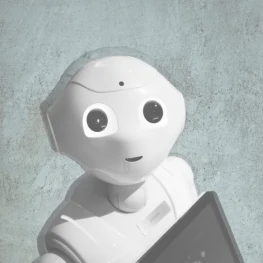As the world slowly recovers, we’ve observed governments, societies and businesses take various precautions to ensure a safe and successful re-opening. The Canadian government has introduced a phase by phase plan to get businesses back open depending on the amount of social interaction required for that industry or business. The more social interaction required for business, the later the government is prioritizing them.
Organizations that operate through a B2C model (business to customer) have begun investing in technology to combat this bottleneck. Even before robots, we witnessed autonomy within all industries. We’ve heard of the exciting breakthroughs Tesla has introduced as a vehicle manufacturer. Smaller companies have introduced automated vehicles, intelligent sensors for condition monitoring and various other AI technologies.
Robots have been consumed by mass populations through pop culture, being an unexplored realm with few applications. We’ve hardly begun accepting the integration of robots within our lifestyles.
Then COVID-19 struck, which revealed the importance of these independent, autonomous machines.
A month after COVID-19 struck, a pair of four wheeled robots were brought to the Sleep Train Arena. The home of the Sacramento Kings turned into a hospital for COVID-19 patients. Nuro, the startup behind these robots, were piloting a test project within that neighborhood to deliver groceries. The goal? To reduce human interaction.
These robots were dubbed R2 by Nuro, and gained lots of publicity. After gaining federal approval in February, the R2s partnered with CVS Pharmacies and convenience stores within Houston.
Others have followed in their footsteps, like Hyundai’s venture Aptiv which focuses on meal delivery to vulnerable individuals across Las Vegas.
The NHS (national health service) has been collaborating with Starship, a UK based startup that builds robots. Starship has deployed robots within Milton Keynes, a small town in England. Henry Harris-Burland, the VP of Marketing at Starship reported a double in their fleet of delivery robots in the past three weeks with 100,000 completed autonomous deliveries.
Harris-Burland described the efficiency of the robots –
“Lots of them are doing … 80-hour weeks and they don’t have time to go to the local grocery store, so they use our robots for their shopping.”
Clearly, robots have begun providing us with functions that we aren’t currently able to perform due to this virus. Everyone is interested in these robots and this interest is anticipated to grow.
Tech experts predict robots will take the world by storm, due to their safe performance and protection of human life in times like these. There is still lots of controversy behind these autonomous services. Many are wondering what happens to these robots after our governments produce a vaccine for COVID-19.
Many believe robots are here to stay, as governments assume the social distancing measures will continue and robots will be able to assist with this. While safety will be improved, integrating robots into our society will have permanent effects on aspects of the gig economy. The question is, how do we adapt?

